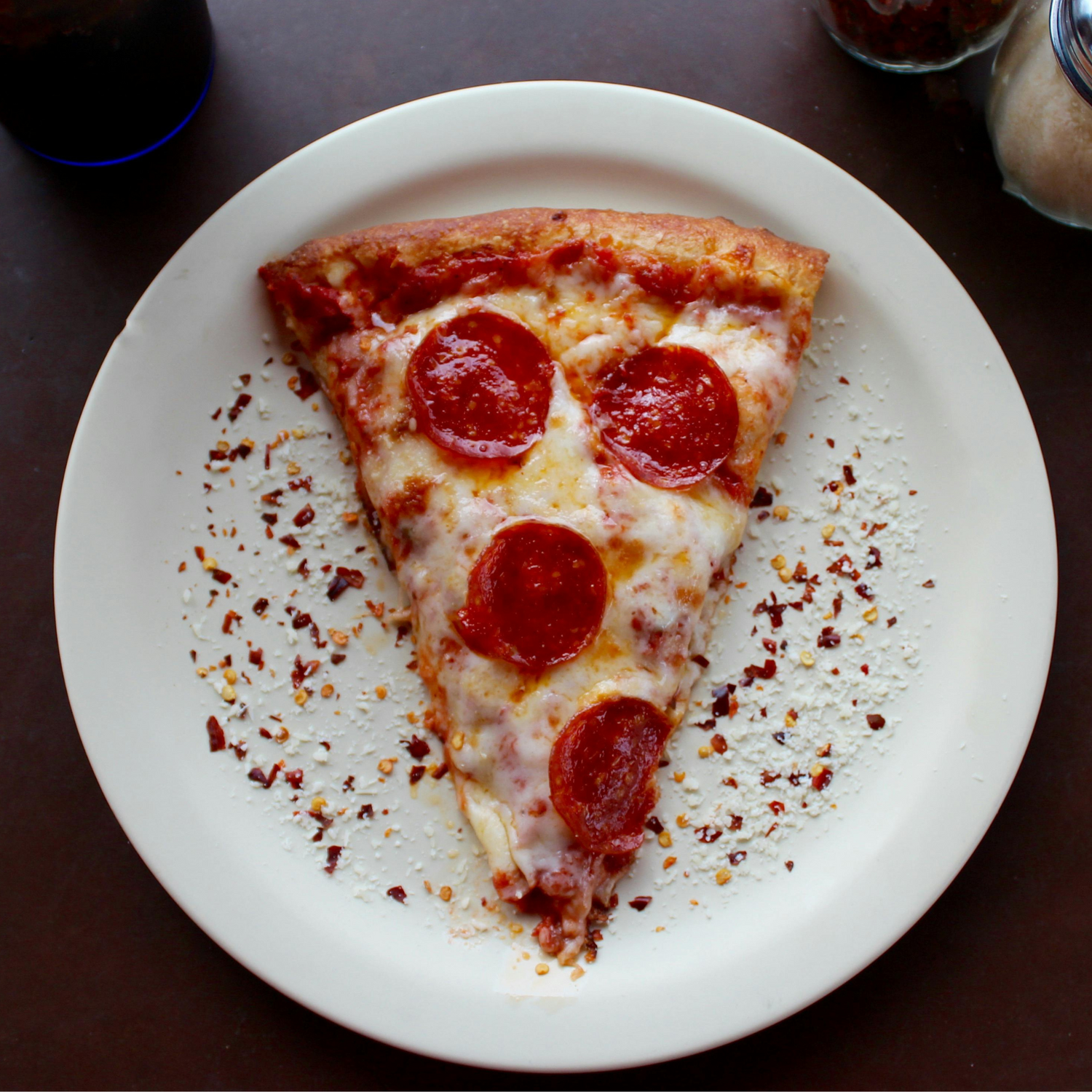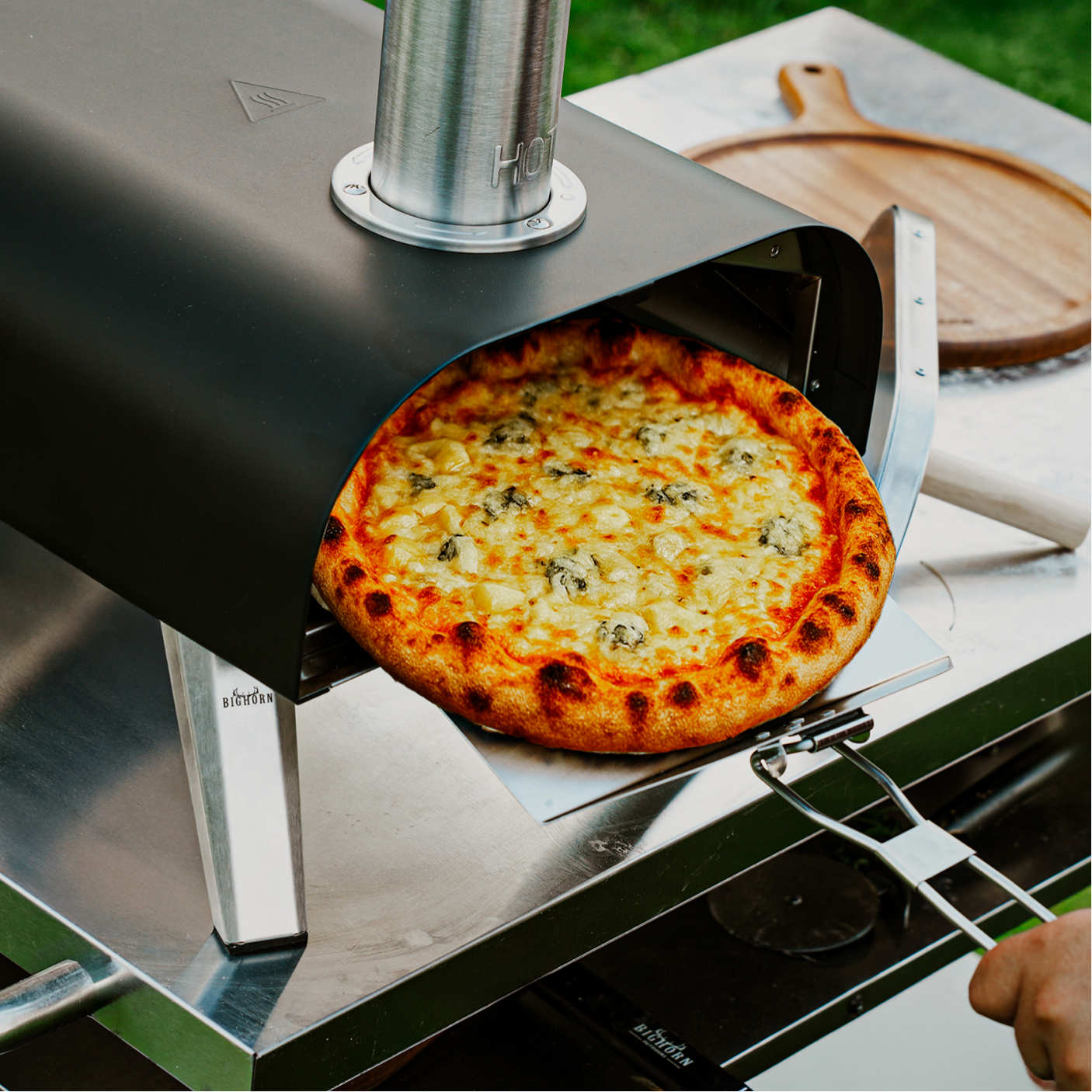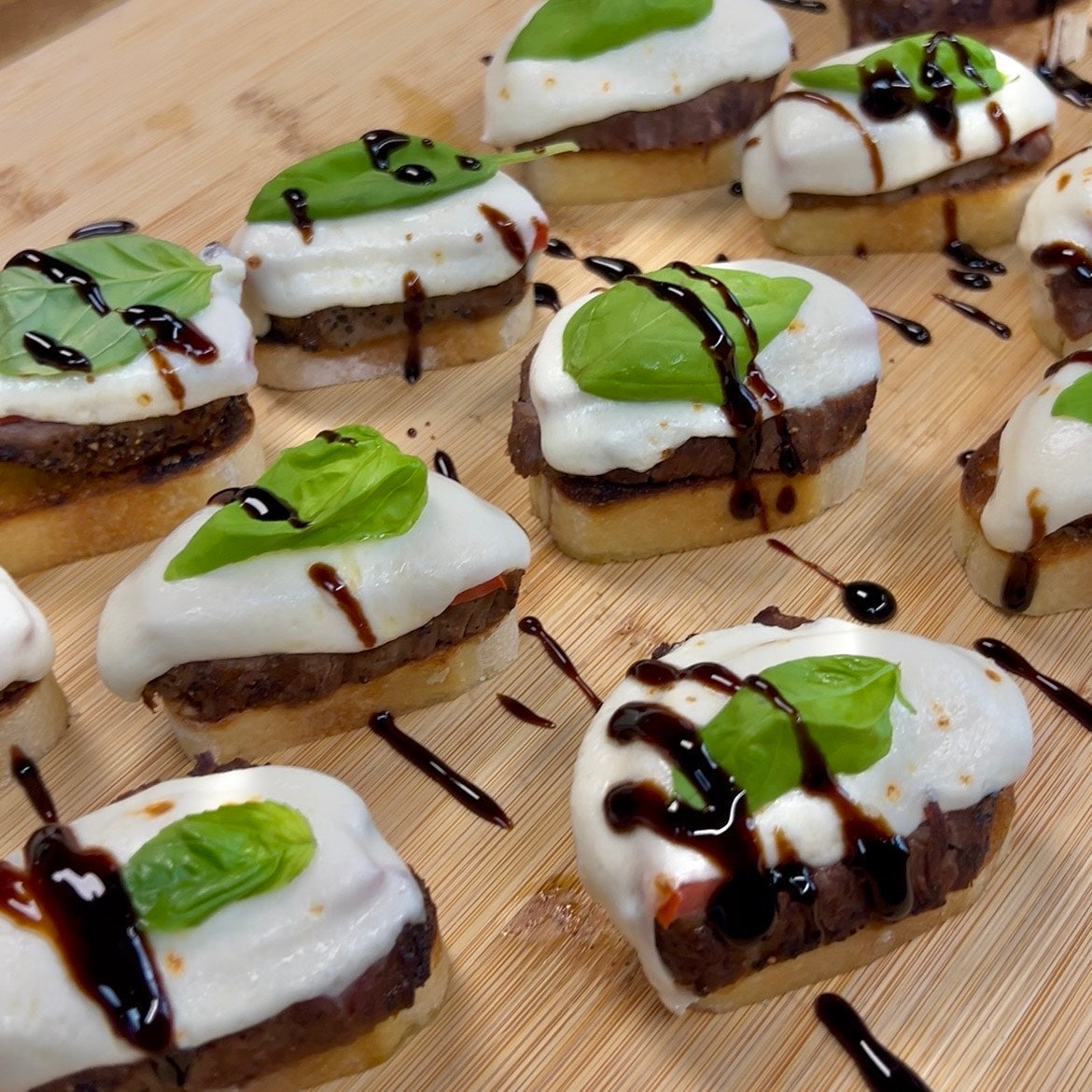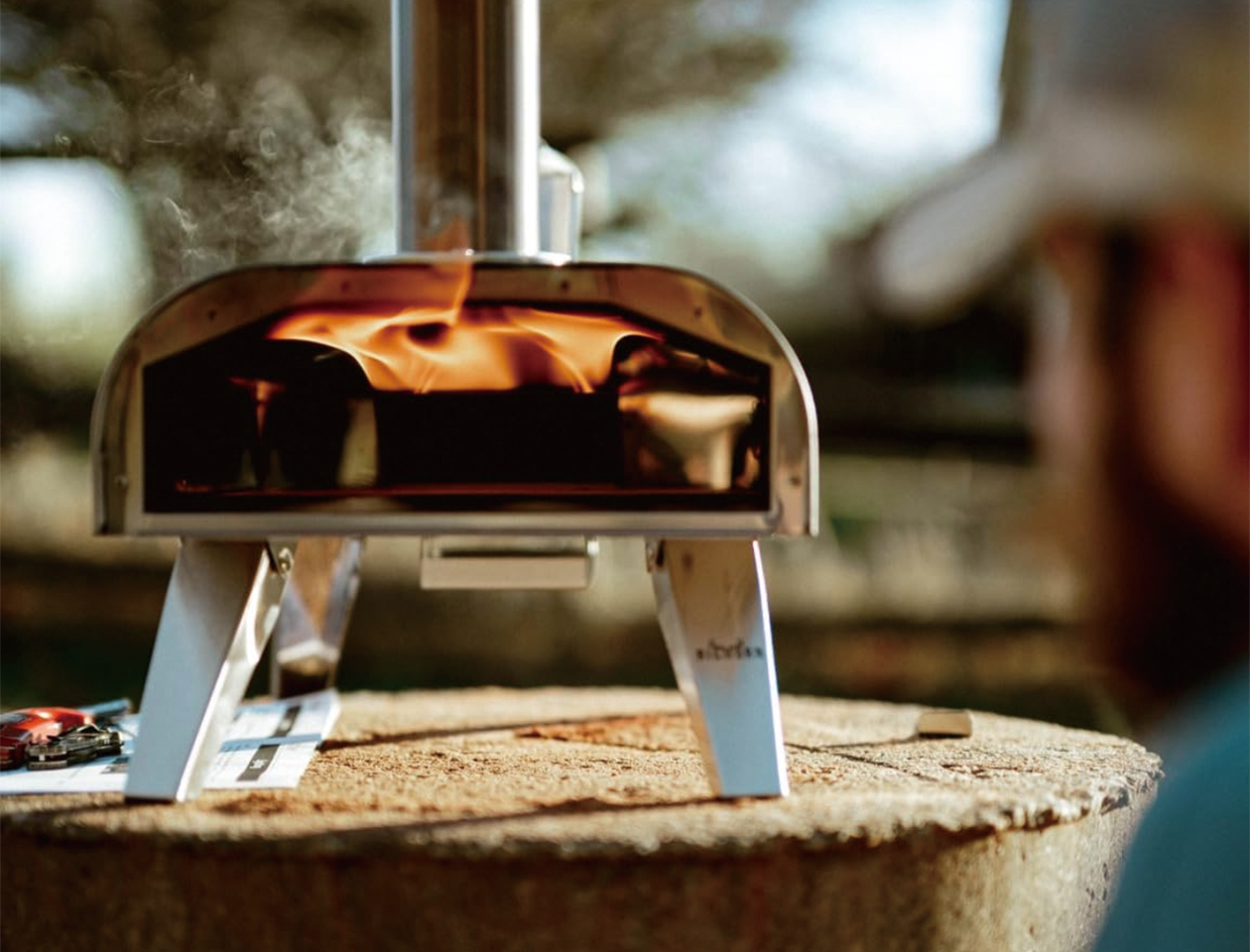Who doesn't love pepperoni pizza? Crispy pepperoni, gooey cheese, soft crust. Want to make great pizza at home? It's actually simple! Get your ingredients ready, crank up the oven, and you can make amazing pizza for your family too.

What Defines Pepperoni Pizza?
First, what is a "pizzeria-style" pizza? While pizza has Italian roots, pepperoni pizza is an American creation. It became a staple topping in U.S. pizzerias in the mid-20th century and is now considered the most popular pizza topping in America.
- Crust: Crisp on the outside yet chewy inside, forming the pizza’s base.
- Tomato Sauce: Tangy, herb-seasoned sauce that balances richness.
- Mozzarella Cheese: Classic stretchy layer, sometimes blended with other cheeses.
- Pepperoni: Spiced, cured pork-and-beef slices that curl into crispy cups when baked.
Pepperoni gives the pizza its name with that special smoky and slightly spicy taste. When you bake it, the edges of pepperoni will curl and release savory oils to blend with melted cheese. This blend creates the rich, satisfying taste that makes pepperoni pizza such a classic American favorite.
Preparing the Perfect Pepperoni
To get that real pizzeria style, you need to choose the right kind of pepperoni.
- What to Look For: The best pepperoni for this pizza will "cup and char." The slices will curl up into little cups in the heat and the edges get crispy. To get this, look for a pepperoni with a natural casing.
- Slice It Yourself: For the best results, buy a whole pepperoni stick instead of the pre-sliced packs. Slice it yourself to about ⅛ inch thick. This is the perfect thickness to get crispy without burning.
- A Quick Homemade Option: If pepperoni is not available in your place, you can make a fresh sausage yourself that tastes just like it. Mix 1 lb of ground pork with a blend of 1 ½ tablespoons of smoked paprika, 2 teaspoons of cayenne pepper, and 2 teaspoons of crushed fennel seeds. The fresh sausage might not curl, but the flavor should be as fine.

The Ingredients Needed for Pepperoni Pizza?
A great pizza starts with a few simple, quality ingredients.
Dough:
1 ball pizza dough (about 9–10 oz, enough for a 10–12 inch pizza)
Sauce:
- 1 tablespoon olive oil
- 1 garlic clove, minced
- 1 can (14–15 oz) crushed tomatoes
- 1 teaspoon dried oregano
- 1 teaspoon dried basil
- ½ teaspoon salt
- ½ teaspoon sugar (optional, to balance acidity)
- Pinch of red pepper flakes (optional, for heat)
Cheese:
- 1–1½ cups shredded mozzarella cheese (about 4-6 oz)
- ¼ cup grated parmesan cheese (optional)
Toppings:
- 30–35 slices pepperoni (about 4-5 oz)
- Fresh basil leaves (optional, for garnish)
- Extra olive oil (optional, to drizzle)
How to Make a Pepperoni Pizza? Step By Step
Step 0: Pizza Making Timeline
For Fresh Dough (same day):
- 3-4 hours before baking: Make fresh dough, let rest at room temperature
- 45-60 minutes before assembly: Start making the sauce
- 15 minutes before assembly: Preheat your oven/pizza oven
For Refrigerated Dough:
- 3-4 hours before baking: Remove dough from refrigerator
- 45-60 minutes before assembly: Start making the sauce
- 15 minutes before assembly: Preheat your oven/pizza oven
Step 1: Preparing the Dough
Your pizza-making starts well in advance of adding toppings. A perfect pizza needs a well-prepared dough. The Signature Pizza Dough Recipe has everything you need to know.
The key step on baking day is to let the dough reach room temperature. So take the dough balls out of the fridge 3–4 hours before you bake (if you prepared the dough before the pizza making day). Cold dough is stiff and hard to stretch, and will not puff properly in the oven. So wait until it feels soft and easy to handle.
Step 2: Preparing the Sauce
- Heat olive oil in a small pot over medium-low heat.
- Add minced garlic and cook for about 1 minute, until fragrant but not browned.
- Pour in the crushed tomatoes.
- Add oregano, basil, salt, sugar, and red pepper flakes if using. Stir well.
- Bring the sauce to a gentle simmer.
- Cook on low heat for 15–20 minutes, stirring occasionally, until the sauce thickens.
- Check the taste and adjust seasoning if needed.
- Let it cool slightly before spreading on your pizza dough.

Step 3: Shaping the Crust
- Flour the counter: Sprinkle flour on a clean counter so the dough doesn’t stick. Place your dough ball right on top.
- Press with fingertips: Use just your fingertips, not your palm. Start pressing in the middle and move outward. Push the air toward the edges.
- Leave the border: Stop about ½–1 inch from the edge. That rim will puff up later into a light crust.
- Make a small circle: Keep pressing until the dough looks like a small, flat round.
- Stretch with your hands: Lift the dough onto the backs of your hands. Turn it slowly, like you’re holding a steering wheel.
- Let gravity help: The dough will stretch as it hangs. Keep turning until you have a circle about 10–12 inches wide.

Step 4: Assembling the Pizza
First, have all your ingredients ready before you start this step. Put a little flour on your pizza peel to keep the dough from sticking.
- Lay the dough: Place your stretched dough carefully on the peel.
- Add the sauce: Use the back of a large spoon to spread a thin layer of cooled sauce. Start in the center and gently move outward, but no sauce on the crust.
- Add the cheese: Sprinkle shredded mozzarella evenly over the sauce. Don’t overdo it—you should still see some red sauce underneath.
- Add the pepperoni: Lay the slices on top of the cheese. Spread evenly.
Last check: Shake the peel gently. If the pizza slides easily, you're good to go. If it sticks, add more flour under the sticky spot.
The Art of Baking with a Professional Pizza Oven
If you want real pepperoni pizza, the kind you’d get from a pizzeria, a regular home oven just can’t deliver the same results. This is where understanding the true Pizza Oven Benefits comes in. Here’s why:
- Crispy, airy crust – A pro oven runs way hotter than the one in your kitchen. That blast of heat makes the edge rise fast, so you get a crust that’s crisp on the outside and soft inside.
- Cheese that melts just right – With even heat all around, the mozzarella melts smoothly without burning, while the sauce bubbles but doesn’t dry out.
- Perfect pepperoni cups – High heat makes those pepperoni slices curl into little cups that hold the flavorful oils. That’s what gives each bite the smoky, spicy kick everyone loves.
- Quick bake, better texture – In just a couple of minutes, the whole pizza cooks through. The bottom stays firm, the top stays gooey, and nothing turns soggy.
That’s the difference between “homemade pizza” and true pizzeria-style pepperoni pizza. And tools like a Big Horn® professional pizza oven are built to give you the exact heat you need.
How to Use It:
- Preheat: Heat your professional pizza oven to 800°F–950°F.
- Bake: Slide the pizza onto the hot stone with a peel. The high heat will cook it fast—usually in just 90 seconds to 3 minutes.
- Turn: Rotate the pizza every 30 seconds to keep the bake even.
- Finish: Watch the pepperoni curl and crisp, the cheese bubble, and the crust rise—just like in a pizzeria.

Final Touches & Tips
Once the pizza comes out of the oven, let it rest for a few minutes so the cheese sets before slicing. Then use a sharp cutter to keep the toppings in place. Just before serving, add a drizzle of olive oil, a sprinkle of parmesan, or a few basil leaves for extra flavor. Keeping a good balance of sauce, cheese, and toppings makes every bite satisfying. And with each bake, your skills improve until your pizza tastes just like it came from a pizzeria.
Want that airy crust and those crispy pepperoni cups at home? A Big Horn® pizza oven makes it easy to bake like a pizzeria.
Common Questions About Pepperoni Pizza
Q1: Can I freeze homemade pepperoni pizza dough for later use?
A: Yes, you can freeze pizza dough for up to 3 months. Wrap it tightly in plastic wrap and store in freezer bags. Thaw in the refrigerator overnight, then let it come to room temperature before shaping.
Q2: What's the difference between regular pepperoni and "cup and char" pepperoni?
A: Cup and char pepperoni has a natural casing that contracts when heated, creating those signature curled cups that hold flavorful oils. Regular pepperoni stays flat and doesn't develop the same texture.
Q3: Can I make pepperoni pizza on a regular baking sheet without a pizza stone?
A: Yes, but preheat your baking sheet in a 500°F oven first. This helps create a crispier bottom crust, though it won't match the results of a pizza stone or professional oven.
Q4: How do I prevent my pizza from sticking to the peel when transferring to the oven?
A: Use semolina flour or cornmeal instead of regular flour on your peel - they act like little ball bearings. Work quickly and don't let the assembled pizza sit too long on the peel.
Q5: What other cheeses work well with pepperoni besides mozzarella?
A: Provolone, fontina, or a blend with sharp cheddar can add extra flavor. Just keep mozzarella as the base for that classic stretch and melt.
Q6: How long can I store leftover pepperoni pizza in the refrigerator?
A: Properly stored pepperoni pizza will keep for 3-4 days in the refrigerator. Store in airtight containers or wrap tightly with plastic wrap.




